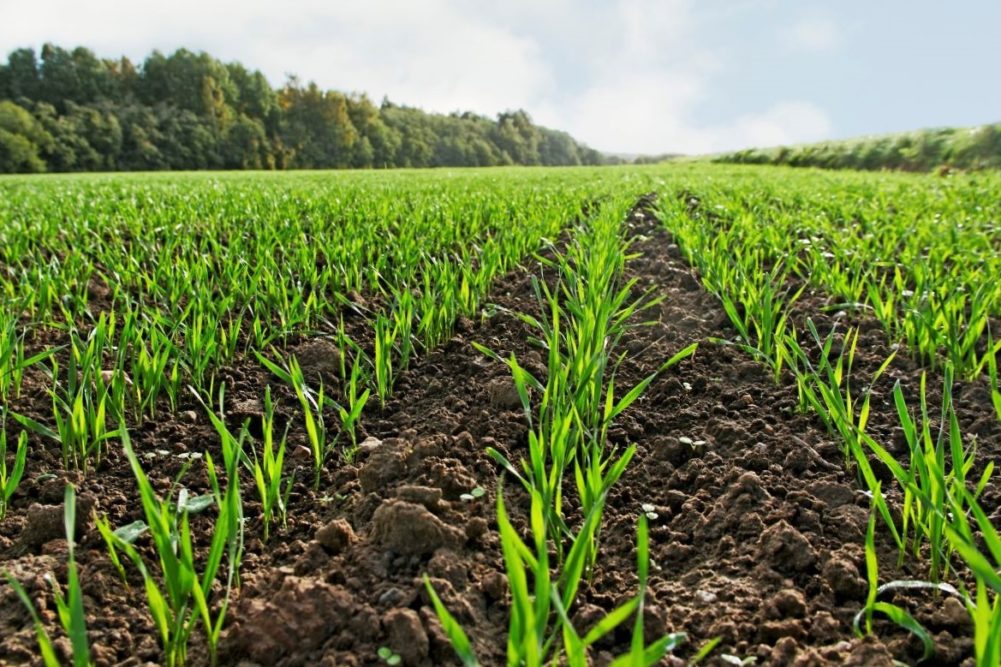KANSAS CITY — The 2023 winter wheat crop is in considerably worse condition than the 2022 crop at the same point a year ago, and in fact it is in worse condition than any winter wheat crop for the date. But as any long-time wheat industry professional will tell you, it’s a long way until harvest, suggesting the crop has plenty of time to recover if weather conditions improve.
The US Department of Agriculture on Oct. 31 released the first aggregate winter wheat condition ratings for the crop that will be harvested in 2023. The 18 principal production states, save California, were in the latter stages of planting as conditions were appraised. The crop in total was rated 28% good to excellent, 37% fair and 35% poor to very poor on Oct. 30. By comparison, the 2022 crop one year ago was rated 45% good to excellent, 34% fair and 21% poor to very poor. It was below the average trade expectation of 41% good to excellent and the lowest rating ever for the date, according to analysts.
Conditions were poorest in the production areas suffering the worst drought, especially the central and southern Plains where hard red winter wheat is the principal variety grown. A majority of Nebraska, Kansas and Oklahoma were in extreme to exceptional drought categories according to the Oct. 25 US Drought Monitor. Winter wheat rated good to excellent on Oct. 30 was 24% in Kansas, 11% in Oklahoma, 4% (all good) in Texas, 28% in Colorado, 22% in Nebraska, 29% in South Dakota and 32% in Montana.
Meanwhile, the Central states, where most soft red winter wheat is grown, were merely in abnormally dry to moderate drought stages. Good-to-excellent ratings on Oct. 30 were 56% in Missouri, 35% in Illinois, 65% in Indiana, 55% in Ohio and 53% in Michigan. However, the percentages of area in drought have been increasing since September in most soft red winter states.
 “In the winter wheat market, 28% good to excellent is pretty poor, but we’ve only got 62% of the crop emerged, so we should watch that as the rest of the crop gets into the ground and starts to come up, and there is rain forecast for hard red winter areas,” a veteran agricultural analyst said. “Some places are set to receive up to an inch, a good deal all around because, as they say, rain makes grain.”
“In the winter wheat market, 28% good to excellent is pretty poor, but we’ve only got 62% of the crop emerged, so we should watch that as the rest of the crop gets into the ground and starts to come up, and there is rain forecast for hard red winter areas,” a veteran agricultural analyst said. “Some places are set to receive up to an inch, a good deal all around because, as they say, rain makes grain.”
Indeed, the National Oceanic and Atmospheric Administration in its 6- to 10-day outlook forecast a 30% chance of above-normal precipitation in Kansas, Oklahoma, northern Texas, eastern Colorado and the lower half of Nebraska. The upper half of the latter state, along with South Dakota, had a 40% chance of above-normal precipitation. In Montana, where drought has dragged on crop conditions for the past year, there was a 50% to 60% chance of above normal precipitation.
Also in its Oct. 31 Crop Progress report, the USDA indicated winter wheat seeding as of Oct. 30 was in the home stretch most everywhere with 87% completed in the 18 states as an aggregate, compared with 86% a year earlier and 85% as the recent five-year average for the date. While planting was a few points ahead of the normal pace, emergence was slightly behind. The USDA said winter wheat emergence was 62%, behind 65% a year ago and 66% as the recent five-year average for the date.






